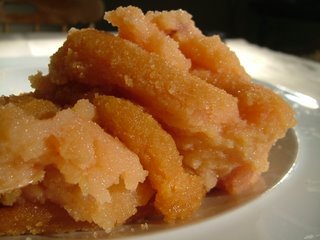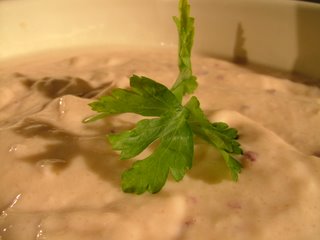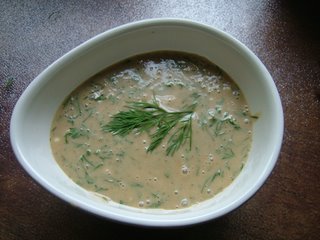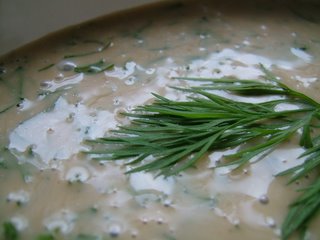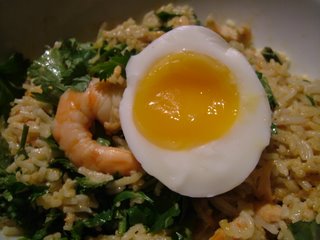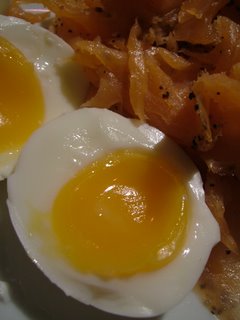Those Padron peppers have got me thinking about Spain, sunny weather and booze, so last night I made a selection of tapas and a big jug of sangria to eat in the garden.
It rained, so we ate indoors.
Some fat sardines, marinaded in olive oil, lemon, garlic and herbs, formed the core of the meal. (More recipes, including one for sangria, to come next week.) If you’re fortunate enough to be able to find some really fresh sardines, which are sweet and tender, this simple preparation really makes the most of them.
Sardines come with a built-in set of biological zips, and can easily be cleaned, gutted and filleted with your bare hands, without any need for a knife until you come to the end and chop the tails off. It’s all a lot less unpleasant than you might think; really fresh sardines don’t smell at all fishy, just sea-like and delicious, even when raw, and I think there’s a real satisfaction that comes from doing this kind of thing yourself.
You’ll need to start by removing the scales from the whole fish. This is very easy – just run a cold tap and gently rub the fish with your fingers under the running water. The scales will come away as you rub. They are quite large and might block the plughole in your sink – scoop them out every now and then and put them in a bowl or a bin bag at the side of the sink. You’ll need this bowl or bag to put the heads and guts in as you prepare the fish.
To gut and clean the sardine, hold the head in your dominant hand and the body in your other hand. Snap the head off downwards, towards the fish’s belly, and pull it away from the body. Most of the fish’s innards will come away easily with the head, as in the picture. You’ll find that some of the sardines are rather fuller than the others; these are the greedy or pregnant ones.
Stick a thumb into the cavity that has appeared where the guts were, and slide your thumb along the underside of the fish to open up the cavity. You’ll find the fish unzips easily up to the point about a quarter of the way from the tail where its digestive tract ends. Run the opened fish under the tap, pulling any remaining bits of gut out of the cavity, and rinse the cavity out until it is clean and no longer bloody.
Your emptied fish should look like this.
You can stop at this point, and go straight to the marinading stage if you don’t mind pulling the fish’s spine out on your plate with your knife and fork. I prefer to fillet and butterfly the fish before cooking – this means that it has the maximum surface area available to soak up the lovely marinade. Removing the backbone is, again, very easy (and probably the most zip-like bit of taking apart this strangely zip-like fish). To open the fish up, put your thumb in that cavity and push your thumb along the underside of the fish to the tail. The fish can then be laid flat on a board. Starting at the head end, pull the spine out of the fish, zip-style, and chop off the tail with a knife.
You’ll be left with some tiny, hair-thin bones in the flesh, but you can leave these alone; they are so fine that you can eat them, and they won’t prick your mouth. I like to trim the edges of the filleted pieces of fish for neatness, but you can leave them ragged if you like.
To make enough marinade for eight sardines (enough to serve two as a main course), you’ll need:
1 wineglass olive oil
Juice and zest of 1 lemon
2 tablespoons each finely chopped parsley, oregano and basil
1 teaspoon crushed dried chilli
2 cloves garlic, crushed
8 turns of the peppermill
Mix all the marinade ingredients in a large bowl and submerge the sardine fillets in the mixture, adding a little more olive oil if necessary to cover. Marinade for at least three hours.
Sprinkle the sardines with salt and cook for about three minutes per side over charcoal or under a conventional grill turned to high, starting with the fleshy side and doing the skin side last. Use a wide spatula to turn the fillets carefully – they will be quite fragile. Baste the fish with any remaining marinade as it cooks. The skin should turn crisp and golden, and start to blister slightly.
We ate this with Padron peppers, chorizo al vino (recipe to come next week), a hunk of good bread and a jug of sangria. Not quite as good as going on holiday, but close.




